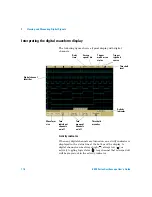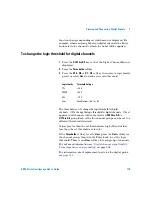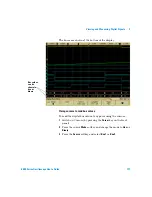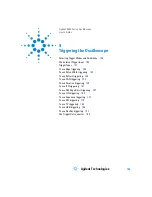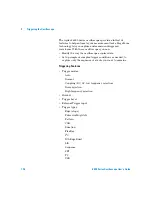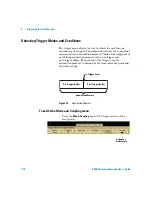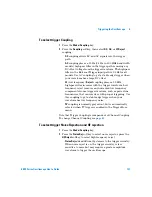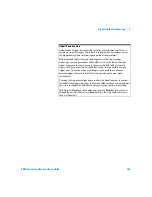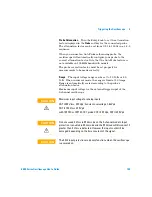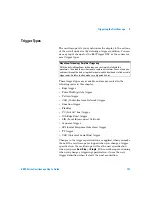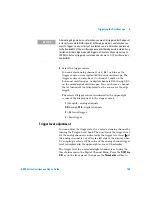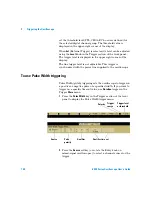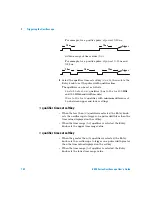
130
6000 Series Oscilloscope User’s Guide
4
Triggering the Oscilloscope
Normal mode
Use Normal trigger mode for low repetitive-rate signals or when
Auto trigger is not required.
In Normal mode the oscilloscope must fill the pre-trigger buffer
with data before it will begin searching for a trigger event. The
trigger mode indicator on the status line flashes to indicate the
oscilloscope is filling the pre-trigger buffer. While searching for
the trigger, the oscilloscope overflows the pre-trigger buffer; the
first data put into the buffer is the first pushed out (FIFO).
When the trigger event is found, the oscilloscope will fill the
post-trigger buffer and display the acquisition memory. If the
acquisition was initiated by
Run/Stop
, the process repeats. If the
acquisition was initiated by pressing
Single
, then the acquisition
stops and you can Pan and Zoom the waveform.
In either Auto or Normal mode, the trigger may be missed
completely under certain conditions. This is because the
oscilloscope will not recognize a trigger event until the
pre-trigger buffer is full. Suppose you set the Time/Div knob to a
slow sweep speed, such as 500 ms/div. If the trigger condition
occurs before the oscilloscope has filled the pre-trigger buffer,
the trigger will not be found. If you use Normal mode and wait
for the trigger condition indicator to flash before causing the
action in the circuit, the oscilloscope will always find the trigger
condition.
Some measurements you want to make will require you to take
some action in the circuit under test to cause the trigger event.
Usually, these are single-shot acquisitions, where you will use
the
Single
key.
Summary of Contents for InfiniiVision DSO6014L
Page 2: ...Agilent Technologies Agilent 6000 Series Oscilloscopes User s Guide...
Page 59: ...58 6000 Series Oscilloscope User s Guide 1 Getting Started...
Page 109: ...108 6000 Series Oscilloscope User s Guide 2 Front Panel Controls...
Page 125: ...124 6000 Series Oscilloscope User s Guide 3 Viewing and Measuring Digital Signals...
Page 251: ...250 6000 Series Oscilloscope User s Guide 5 Making Measurements...
Page 287: ...286 6000 Series Oscilloscope User s Guide 6 Displaying Data Interpreting Decoded LIN Data...
Page 321: ...320 6000 Series Oscilloscope User s Guide 7 Saving and Printing Data...
Page 370: ......

